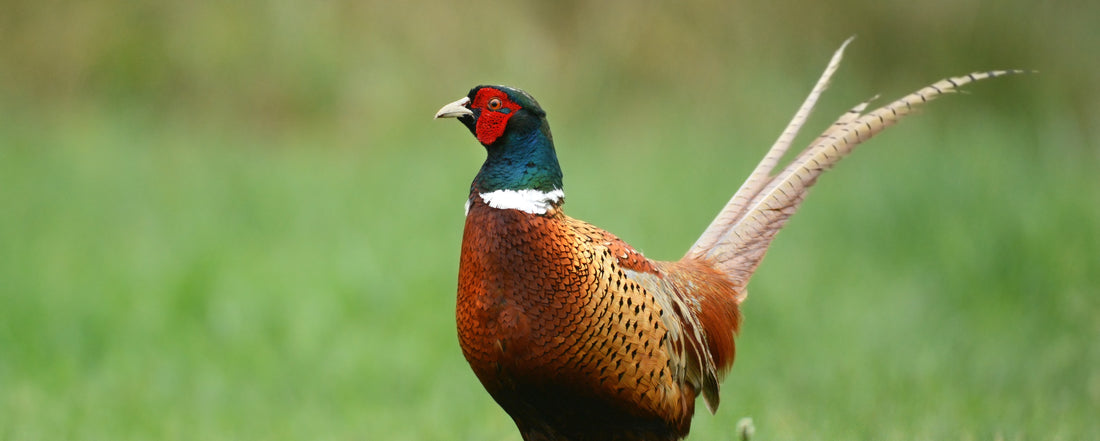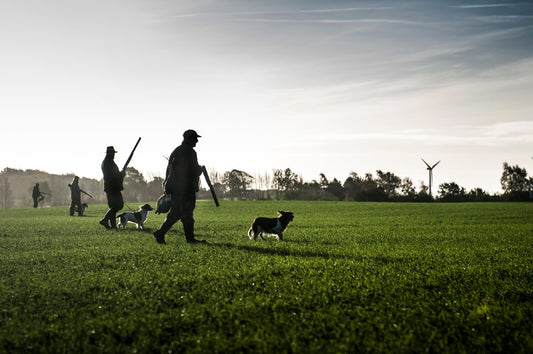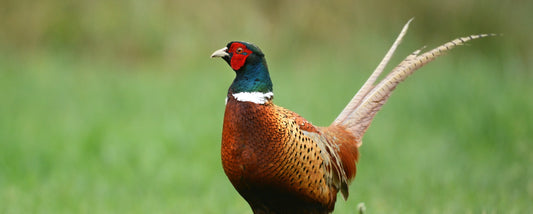MASTERING FIREARMS TECHNIQUES
Opt for a side-by-side or over-under shotgun in 12, 16, or 20 gauge, with a particular fondness for the 28 bore in select situations. Optimal barrels range from 28–32", featuring chokes set at ½ to ¾, catering to individual shooting preferences and physique. Employ the recommended loads of no. 5s or 4s for average to high-driven pheasants:
28 bore: 25-28g
20 bore: 25-30g
16 bore: 28-30g
12 bore: 28-32g
PRIORITIZE SAFETY
Safety remains paramount. Pay close attention to your host's safety briefing and consistently monitor the positions of flankers and beaters. Ensure you are equipped with the correct safety gear, including appropriate clothing and footwear. This should include active ear defenders to protect your hearing during shooting activities.
ADHERE TO THE RULES
Familiarize yourself with the unique rules of each shoot, encompassing ground game, corvids, and pigeons. Grasp the procedural aspects, such as initiating the drive, peg numbering, and cartridge disposal.
MASTER THE TECHNIQUE
Upon reaching your peg, meticulously assess potential bird flight paths, consider crosswinds, and mentally rehearse various shot scenarios. Pinpoint your kill window, engage in practice swings, and mentally prepare for diverse shooting circumstances.
OBSERVE THE LINE
Carefully scrutinize the bird's line, height, and speed before adjusting your stance and elegantly mounting the gun.
INTENSE FOCUS ON THE TARGET
Maintain unwavering focus on the pheasant's head and beak, significantly augmenting the probability of a precise and clean kill.
STRATEGIC MOVEMENT
Strategically plan your bird kill position before gracefully adjusting your feet and seamlessly mounting the gun. Ensure a swift balance readjustment before addressing the bird, avoiding any awkward or unnatural stances.
OPTIMAL STANCE DISTRIBUTION
For average to medium-range pheasants, distribute your weight with a 60% emphasis on the front foot. Fine-tune this stance for high-flying birds positioned beyond the 40-yard mark.
ADAPTATION FOR HIGH DRIVEN BIRDS
Increase the emphasis on the back foot when facing high driven pheasants, providing a more comfortable and effective shooting stance.
SMOOTH, CONTINUOUS MOTION
Maintain an uninterrupted, fluid movement of your gun along the bird's flight path from initiation to completion, significantly enhancing shot accuracy.
HANDLING HIGH CROSSERS
Optimal positioning off the back foot aids in maintaining the line when tackling high crossers.
APPROACH FROM BEHIND
Always execute a seamless swing of your gun from behind the bird when engaged in driven pheasant shooting.
STRAIGHT DRIVEN BIRD TECHNIQUE
Adjust your barrel position for dead-straight driven birds by leading ahead before elegantly realigning your barrels and executing the shot.
CONFIDENCE IN YOUR LEAD HAND
For right-handed shooters, the left hand takes charge of pointing the barrel. Trust your instincts and confidently take your shots on the initial aim.
FINE-TUNE YOUR GRIP
Adjust the position of your lead hand slightly for high-driven birds or extended, crossing shots, optimizing control over your swing.
HONE RANGE JUDGMENT
Precision in judging distance is a pivotal skill for consistently accurate shooting.
PERSISTENT HEAD POSITION
Maintain a steadfast focus on the stock until the bird commences its descent to avoid premature lifting of your head.
UTILIZE THE SECOND BARREL
Employ the second barrel judiciously when needed, upholding ethical standards for a clean kill.
SAFETY PRECAUTIONS FOR DOUBLE GUNNERS
Before exchanging guns, conscientiously engage the safety catch, ensuring a secure transition when passing the gun.
COMMITMENT TO PRACTICE
Regularly simulate complete shots using snap caps to refine your technique, emphasizing a smooth mount, precise swing, and well-timed shot. Periodic visits to a shooting school or clay ground are invaluable for maintaining and enhancing your skills in tackling high tower scenarios.





